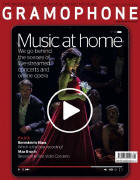Texte paru dans: / Appeared in:
|
|
|
Outil de traduction (Très approximatif) |
|
|
Reviewer:
Jed Distler Pinnock particularly shines when he imbues a Prelude and Fugue coupling with distinctive characters. A good example of this can be found in his laid-back yet winsomely pointed A major Prelude, which is followed by a brashly upbeat reading of the Fugue in the same key. The F sharp minor Prelude emerges less like a keyboard exercise and more like a dance movement, just as the ricercare-like nature of its companion Fugue in the same key inspires a vocally informed interpretation. Knowing Pinnock’s sensitive and involving traversals of the Goldberg Variations’ minor-key movements, the Italian Concerto’s Adagio and the spacious Sarabandes from his second and superior recording of the Partitas, I expected more from Book 1’s monumental pieces. The E flat major Prelude and Fugue are surprisingly sober and matter-of-fact, while I’ve rarely heard such a clunky rendition of the sublime B flat minor Prelude, together with Pinnock’s ponderously dispatched C sharp minor and B minor Fugues. For this reason, my harpsichord Book 1 first choices remain the aforementioned Gilbert, the warmth of spontaneity of Céline Frisch’s edition (Alpha, 4/16) and the hard-to-source yet profoundly rewarding Blandine Verlet (Naïve) and Davitt Moroney (Harmonia Mundi, 4/89). Still, Pinnock’s best work deserves respect and attention, and if Book 2 looms on the horizon, I hope I’ll be here to listen. |
|




